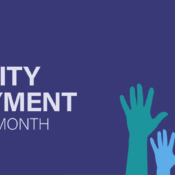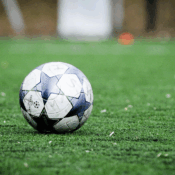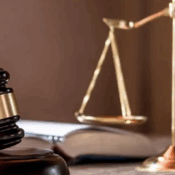
Super Bowl LVI Shines a Light on Inequities
Imagine if you had to download an app to access the volume for the pre-game entertainment and halftime show during yesterday’s Super Bowl.
You would likely be upset, confused and, perhaps, even angry.
Deaf and hard of hearing individuals were told the equivalent of this regarding accessing the sign language performances during the pre-game and halftime shows.
To access Sandra Mae Frank’s renditions of "America the Beautiful" and the National Anthem in American Sign Language (ASL), as well as Warren “Wawa” Snipe and Sean Forbes’ ASL-based covers of the songs performed during the halftime show, you had to access a separate stream via NBCSports.com or the NBC Sports app.
Prior to the Super Bowl, the National Association of the Deaf (NAD) sent out a flurry of emails and posted across multiple social media channels hyping up the performances and emphasized that people needed to access these performances via a separate stream.
The respective performances, especially the first of its kind in which Deaf musicians, let alone two of them, would be featured during the halftime show, were undoubtedly the topic of conversation amongst Deaf and hard of hearing circles on social media leading up to the Super Bowl.
During and after the Super Bowl, many Deaf and hard of hearing individuals shared their dismay and confusion regarding why Sandra Mae did not appear throughout the two songs during NBC’s broadcast via Picture-in-Picture (PiP) while Wawa and Sean did not appear at all.
Sandra Mae, also known as Dr. Wilder on NBC's New Amsterdam and Abigail on Zoey's Extraordinary Playlist, appeared briefly via PiP during the broadcast. On the NBCSports.com and the NBC Sports app streams, the camera angle was off-center and the line of sight was obscured a few times by a person wandering in front of Sandra Mae.
Meanwhile, during the halftime show that featured Dr. Dre, Snoop Dogg, Eminem, Mary J. Blige, and Kendrick Lamar at center stage, Wawa and Sean delivered a performance that was seen only via the separate stream. Furthermore, they were not on the main stage next to the featured artists. They were not even on the playing field. Instead, they had their backs to the goal post and were positioned in an area with poor lighting that made it somewhat difficult for viewers to see them.
The aforementioned challenges with line of sight, positioning and visibility suggest that overarching accessibility did not receive an equal amount of consideration in the overall planning phases.
Better than nothing perpetuates the status quo and further marginalizes an already marginalized population in the Deaf and hard of hearing community.
In their press release announcing the performances, the National Football League (NFL) and the National Association of the Deaf (NAD) framed access to the performances as an “elevated accessibility experience.”
This experience was not even available to those who do not have access to streaming devices (including those that access television using rabbit ear antennas) or did not realize or know that they had to separately stream these respective performances.
Buzzfeed shared in their “16 Super Bowl 2022 Halftime Show Details You Probably Missed” article that “Two deaf rappers, Sean Forbes and Warren “WaWa” Snipe, reportedly performed alongside the headliners…” While used subtly, ‘reportedly’ was an interesting and compelling addition to the blurb as it suggested that they had no tangible confirmation that two Deaf performers actually performed ASL covers “alongside” the household names.
Consequently, as a part of the greater conversation about diversity, equity, inclusion and, ultimately, accessibility, providing an ASL-only stream did not make for a wholly equitable, inclusive and accessible experience.
Furthermore, despite the NAD’s constant messaging about how to access the ASL stream, it is unreasonable to expect the NAD and like-minded organizations (e.g., DPAN.TV) to reach every Deaf and hard of hearing individual, as well as others who would have liked to watch the ASL performance.
Along these lines, I think about the 90+ percent of Deaf and hard of hearing children who are born into hearing families. What if Sandra Mae could have inspired a Deaf or hard of hearing child to become an actor? What if Wawa and Sean could have inspired the next Deaf hip hop artist?
While this may have been viewed as an improved and elevated experience, it was provided only to a select few. Meanwhile, in the context of greater society, the signing Deaf community remained further marginalized.



